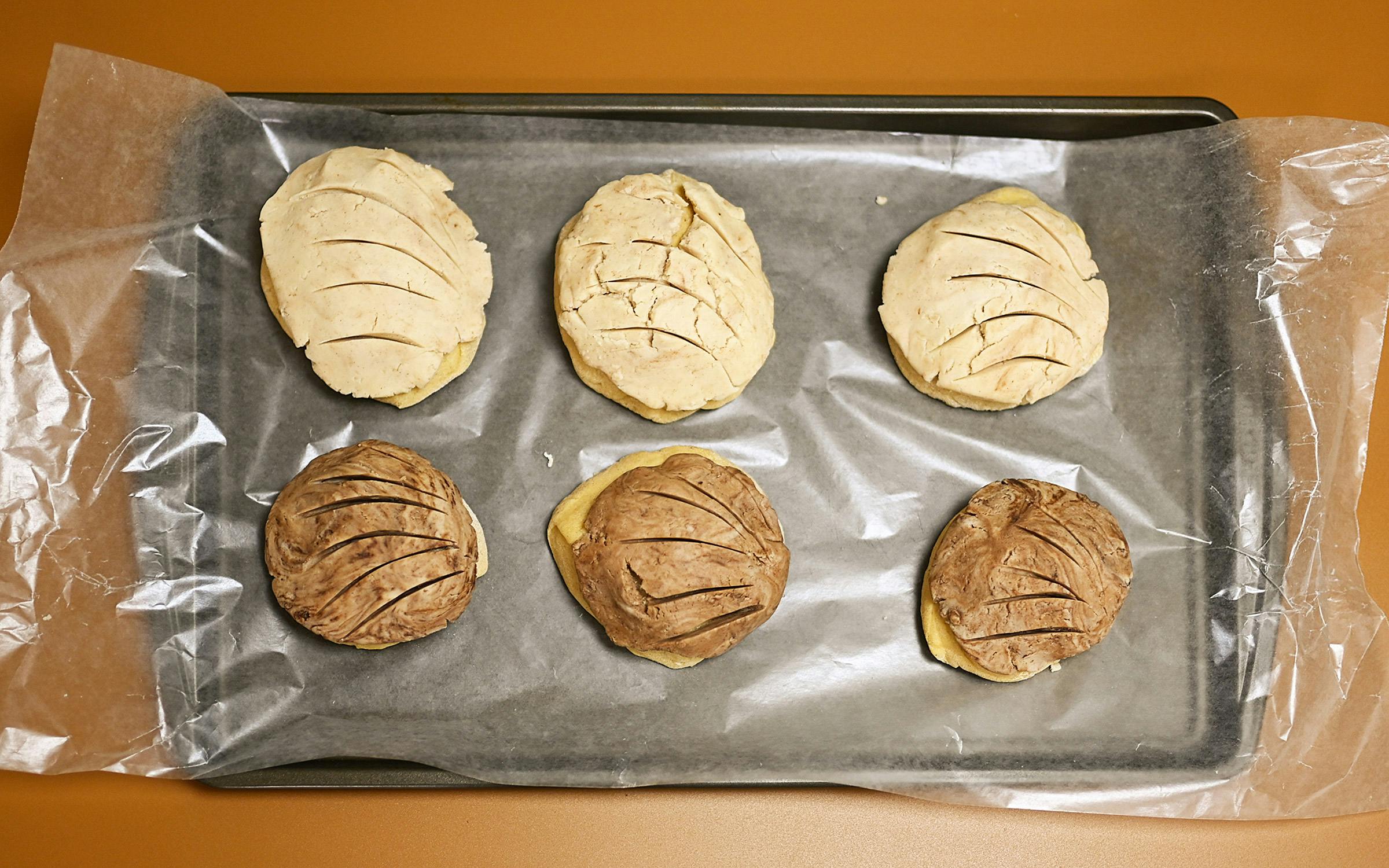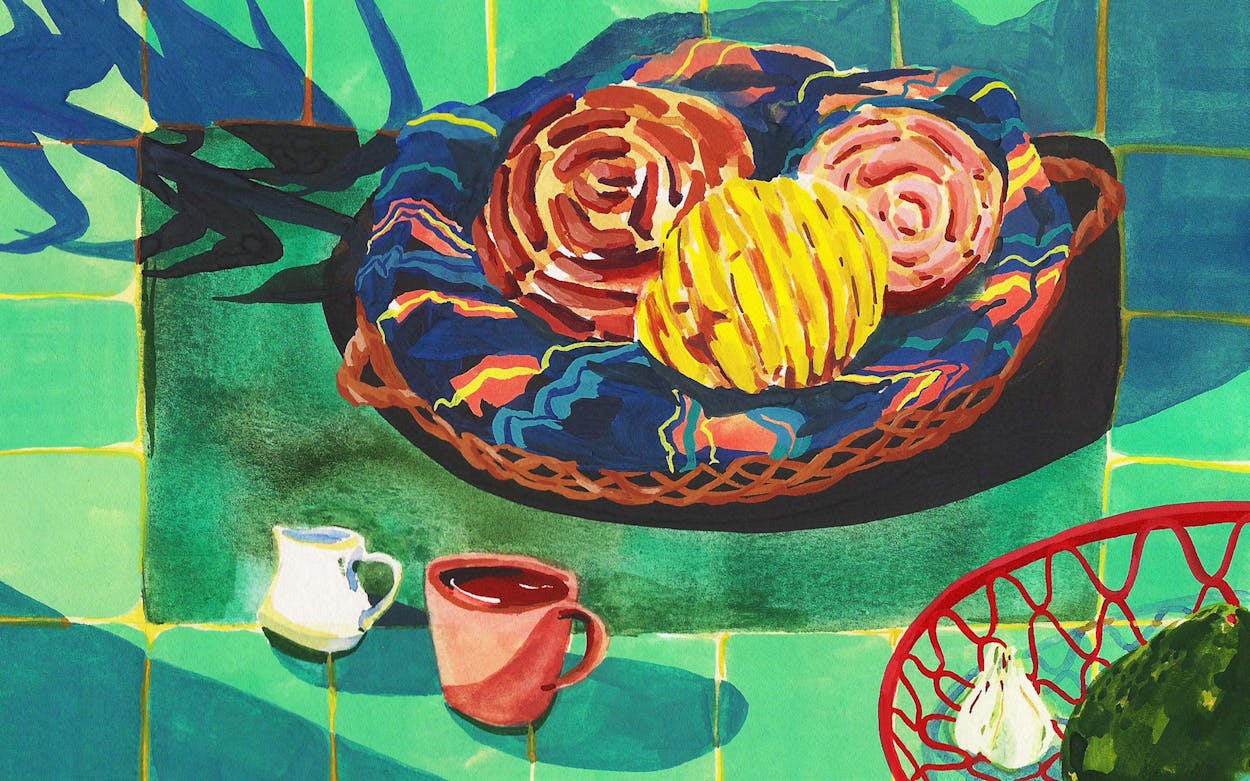My grandmother made cooking seem effortless. Within minutes of our arrival at her house on the West Side of San Antonio, she could have buttery scrambled eggs, bacon, and tortillas ready to eat, serve up a cup of arroz con leche dusted with cinnamon as a midday treat, or even turn Spam into the key ingredient of tacos that my family still talks about to this day. And she could make all of this happen while buzzing around the house, tending to wild grandchildren like me and my sister, finishing a load of laundry, and catching up on gossip around the dining table.
When my grandmother died in 2012, she left a massive hole in our family that was especially pronounced in the kitchen. My grandpa filled in where he could (and made a mean menudo himself), but holidays, birthdays, and weekly get-togethers weren’t the same without my grandma’s busy stove top and the delicious smell of steam from her rice pouring into the living room.
Josefina Peña was adept at finding ways to make each and every one of her children and grandchildren feel special. She was the most generous person I’ve ever known, and always found ways to help people even when she hardly had enough herself. But as devout a Catholic as she was, she was also the first to laugh at dirty jokes and was a good enough gossip to know what everyone in the neighborhood was up to.
As in many immigrant households, food felt like an anchor that tied me to my culture. Mexican food tethered me to my grandmother and the traditions she brought with her from Coahuila to Texas when she was 28, but it’s also one of the things that’s made me feel inadequate. My grandmother didn’t write down her recipes. She kept them in her head, and it wasn’t until after her death that I realized I’d never actually know how to cook the meals she’d made for us in quite the same way. Being a second-generation Mexican American made that disconnect feel even more dramatic.

I was already self-conscious about my Spanglish, and though I felt confident enough on trips to visit relatives or to go on vacation in Mexico, it was pretty clear that everyone there knew I wasn’t a local. Food was a way in. Asking for something to eat was among the first things I’d learned to do in Spanish. And while I might’ve tripped over more complex vocabulary words or struggled to connect with the same pop culture references as friends or family in Mexico, food was a common interest to bond over and it transcended the insecurities I felt.
Over the years, I’ve sometimes wondered if I could just cook my way back into the memories of my grandmother’s house. Maybe learning to make some of her favorite foods would bring me closer to her, and even help me get past some of those nagging doubts that I wasn’t “Mexican enough.”
I decided to start with the simple, delicious concha. A staple in Mexican households, this sweet pastry has a streusel-like topping cut in the shell pattern that gives the treat its name. Conchas come in a variety of colors, from bright pink and yellow to subtler white and brown. My grandma didn’t bake conchas for us, but they were one of her absolute favorite pastries to buy. I still remember the jolt of excitement I’d feel when my sister and I would pile into the truck to head to the panadería, or when we’d get to Gramito’s house to find a grease-splotched paper bag with cookies and conchas stacked inside.
Now first off, let me just say that I am no Josefina. I’m not hopeless in the kitchen, but between my grandma and my mom (whom I love dearly, but whose signature dish is a grilled cheese), I fall somewhere in the middle. So when I set out to make these treats, I did so cautiously, enlisting some help from my little sister—a noted concha connoisseur.
Unlike the rest of the world, I did not go through a bread-making phase during the pandemic, so I was a bit intimidated by the dough at first. As it turns out, active dry yeast makes things pretty easy. The trickiest part of the process turned out to be adding in the flour mixture. My rogue mixer was a bit too powerful; there are probably still some stray pieces of dough around my kitchen that I just haven’t found yet. We let the dough rest after kneading it, and as we impatiently waited for the dough to rise, I started work on the streusel topping.
The concha topping is critical to pulling off the entire recipe. In my opinion, it’s the best part of the concha because it holds most of the sweetness and visual appeal. It’s a little crumbly but delicious, which makes sense once you find out that the key ingredients are a whole lot of vegetable shortening and powdered sugar. Mixing in some cocoa powder, vanilla, flour, and cinnamon (this isn’t always included in concha recipes, but cinnamon is an ingredient in every Mexican dessert I’ve ever loved), I worked it into a Play-Doh-like consistency.

I shaped the dough into eight evenly sized balls, then divided up the topping and flattened it into eight discs to drape onto each bun. Professional panaderos actually have concha cutters that stamp the shell pattern into the topping, but I just used a butter knife to score it. I popped them into the oven, and waited fifteen minutes to see if my work had paid off.
Even before their time was up, I felt fairly confident. The dough looked and felt right, and after my sister snuck a quick bite of the topping, she reassured me that it tasted right too. The kitchen filled with a sweet, heady scent not unlike that of a panadería, and once I took the tray out of the oven, my confidence grew even more. As the buns rose in the oven, the topping spread out into a trademark shell. Sure, they weren’t perfectly symmetrical, and I may have overdone it on the streusel for a few of the buns, but upon taking my first bite, there was no mistaking the subtle, satisfying sweetness of a concha.
I was surprised by how proud I felt. I’d set out on this challenge and, sure, I wasn’t exactly a natural, but I pulled it off. Instead of focusing on my insecurities, the process brought up fun memories. I’d forgotten how my parents and cousins used to gently tease my sister, calling her a viejita (little old lady), since even as a preschooler she preferred to take her conchas with a bit of coffee or a warm milk concoction that Gramito made for her.
I was sixteen when my grandma passed, and I often catch myself wondering how I could have bonded with her as an adult. Would we watch novelas on Netflix together or go shopping at the mall? Maybe I could’ve even cooked for her, a small gesture of thanks for the decades she spent feeding our family and bringing us together. As the conchas cooled on my kitchen counter, I thought about what it would’ve been like to surprise her with a bag full of one of her favorite treats, homemade and delivered to her front porch.
Want to try making your own conchas? Find the recipe at Mely Martínez’s Mexico in My Kitchen.
- More About:
- San Antonio








